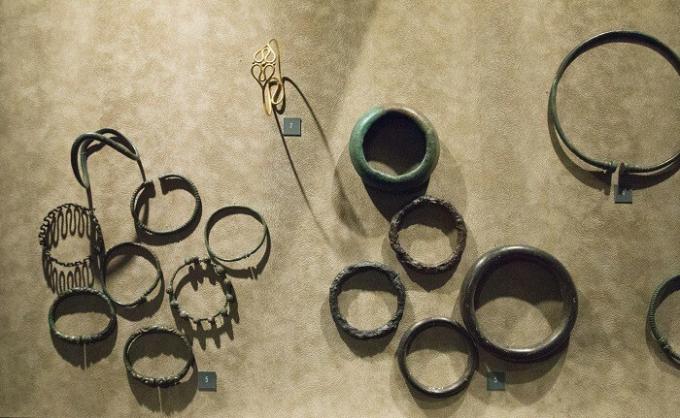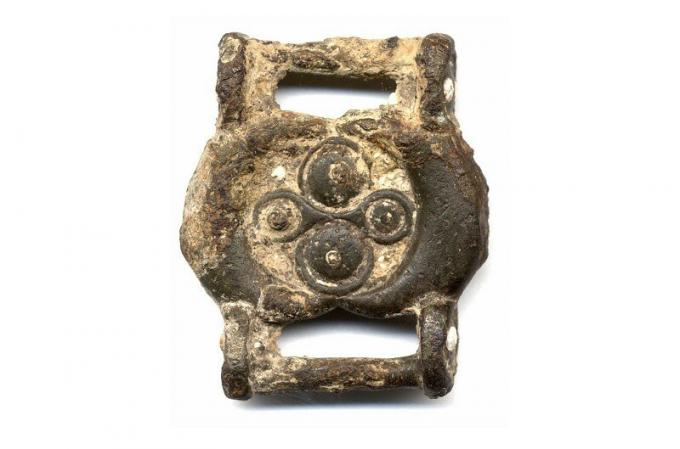Iron Age: characteristics of this stage of Prehistory
Throughout history, there have been several events that have indicated the end of one era and the beginning of another.
Aspects that are everyday for us today, such as the domain of fire, writing or the wheel were of great relevance for ancestral cultures and marked a before and after in their story.
In this article let's talk about the Iron Age, the last great period of Prehistory, which receives this name because the human being managed to find a way to work that metal. Let's see what happened at this time, what great discoveries were made and how they were decisive for the formation of what our society is today.
- Related article: "The 6 stages of Prehistory"
What is the Iron Age?
The Iron Age, which began around 1000 BC, is the last metallurgical period of Prehistory, that is, it was the last stage of history that receives the name of a metal, its predecessors being the Copper Age (6500 B.C.) and the Bronze Age (2800 A.C.).
The main great event that occurred at this time was the ability to extract iron and mold it so that weapons, tools and other utensils could be made.
Iron is not a stronger mineral than copper or tin, but it is a very abundant metal. For this reason, when discovering how to work it, there was a 180 degree turn in history, since the way of molding an inexpensive, abundant and very useful material, as well as being a real revolution technological.
Characteristics of this historical period
The Iron Age is divided into two great sub-periods.
- Iron Age I (1200 BC to 1000 BC): The only relevant fact is that it is discovered how to work iron.
- Iron Age II (1000 BC to 550 BC): The use of iron becomes very popular, reaching levels of mass production and allowing a great technological and cultural development.
Before addressing the specific characteristics of this great period, it should be noted that the Iron Age It was not a homogeneous period worldwide, nor did its beginning occur simultaneously in all cultures on the planet..
Depending on the continent, and according to historians, the Iron Age has different starting dates. When it was discovered how to work iron, this great discovery was gradually expanding to other parts of the world. In the Ancient East this period arose around the twelfth century BC, while central Europe began later, in the eighth BC, and in northern Europe in VI. A.C. In Africa, in what is now Nigeria, it began around the 11th century BC.
1. Smelting and iron extraction
The beginning of this great age was, as we have already mentioned, when humans discovered how to work iron.
Iron is a metal that has a high melting point of 1,538 ° C / 1808 ° K. It is for this reason that the discovery of how to melt it is believed to have been accidental, since it is surprising that prehistoric humans managed to manage to reach such high temperatures.
It is hypothesized that someone must have accidentally thrown iron stones into the fire and that, seeing how this mineral melted and could be worked, they began to experiment with this and the casting technique was perfected. This is the fundamental characteristic of the Iron Age.
- You may be interested: "The 4 main branches of Anthropology: what they are like and what they investigate"
2. Resistance vs abundance
Compared to the metal most used in the previous stage, bronze, iron has a low resistance.
Nevertheless, is one of the most common minerals on Earth, being the fourth most common element in the earth's crust and the substance that makes up 70% of the core of our planet.
It is for this reason that its use, compared to other minerals, is very economical, since it is practically everywhere.

3. Weapons
Although it sounds pessimistic to say so, the main engine of technological and scientific development in history has been war.
The manufacture of weapons was increased thanks to the fact that this mineral was more common.
The weapons were manufactured in a way similar to the mass production of modern industry. Cultures that mastered techniques for making iron weapons became strong civilizations that they subdued other peoples.
- You may be interested: "What is Cultural Psychology?"
4. farming
Prehistoric agriculture benefited from the use of this mineral, since tools could be made for the field, such as plow points and axes.
This fact allowed to harvest more, more effectively and requiring less time. In addition, despite the lower resistance than bronze, harder floors could be worked as it is a more common material.
5. Aesthetic culture and art
Better agriculture means more food and more weapons provide security. Thanks to this, the human being of the time had the ability to specialize in activities independent of obtaining food.
To entertain themselves, the people of these ancient cultures were making jewelry, more complex clothing and artisan objects, which was a great cultural advance and a very striking change in art prehistoric.
Each culture elaborated its own styles, which implied an increase in cultural differences. What's more, companies specialized in the elaboration of certain manufactured products were emerging and they perfected specific economic activities.
6. Exploration and contact between cultures
Directly related to the manufacture of handicrafts, arises the need and interest in exchanging products between cultures.
Thus, the means of transport were also improved, allowing to facilitate contact between cultures and, also, a better exploration of the world, expanding what was known until now. Great inventions of the Iron Age that allowed this were the wheel and the sailing ship.

7. Population growth
As agriculture improves and there is greater security, there was a demographic increase.
In addition, the houses were built with more solid materials and following techniques that allowed them to be manufactured more efficiently and quickly. The first fortifications were also created, such as ramparts and buildings with thicker walls.
8. Intellectual development
The advances that occurred at this time contributed to the expansion of the knowledge of the world and also the intellectual capacity of the human being by having more contacts with other cultures.
In other words, having better transportation made it easier to discover other cultures, with their own technological advances, which were shared, enriching other societies culturally.
End of the Iron Age
Despite the great technological advance that the discovery of how to work iron, in addition to improvements in navigation, agriculture, defense and art, in the entire Iron Age there is no written record that can explain to us exactly how the people of that age lived. epoch.
The great event that put an end to it was the invention of writing, some 3,000 years ago, ending both the Iron Age and the Metal Age and beginning the Old Age.
Bibliographic references:
- Deamos, M; Chapa, T. (1997). The Iron Age. Madrid Spain. Synthesis.
- Eiroa, J.J. (2006). Notions of General Prehistory. Barcelona, Spain. Ariel.
- Fernández, V. (2007). Prehistory. The long road of humanity. Madrid Spain. Alliance.
- Kristiansen, K. (2001). Europe before history. Barcelona, Spain. Peninsula Editions.
- Menéndez, M. (2013). Recent prehistory of the Iberian Peninsula. Madrid Spain. UNED.

